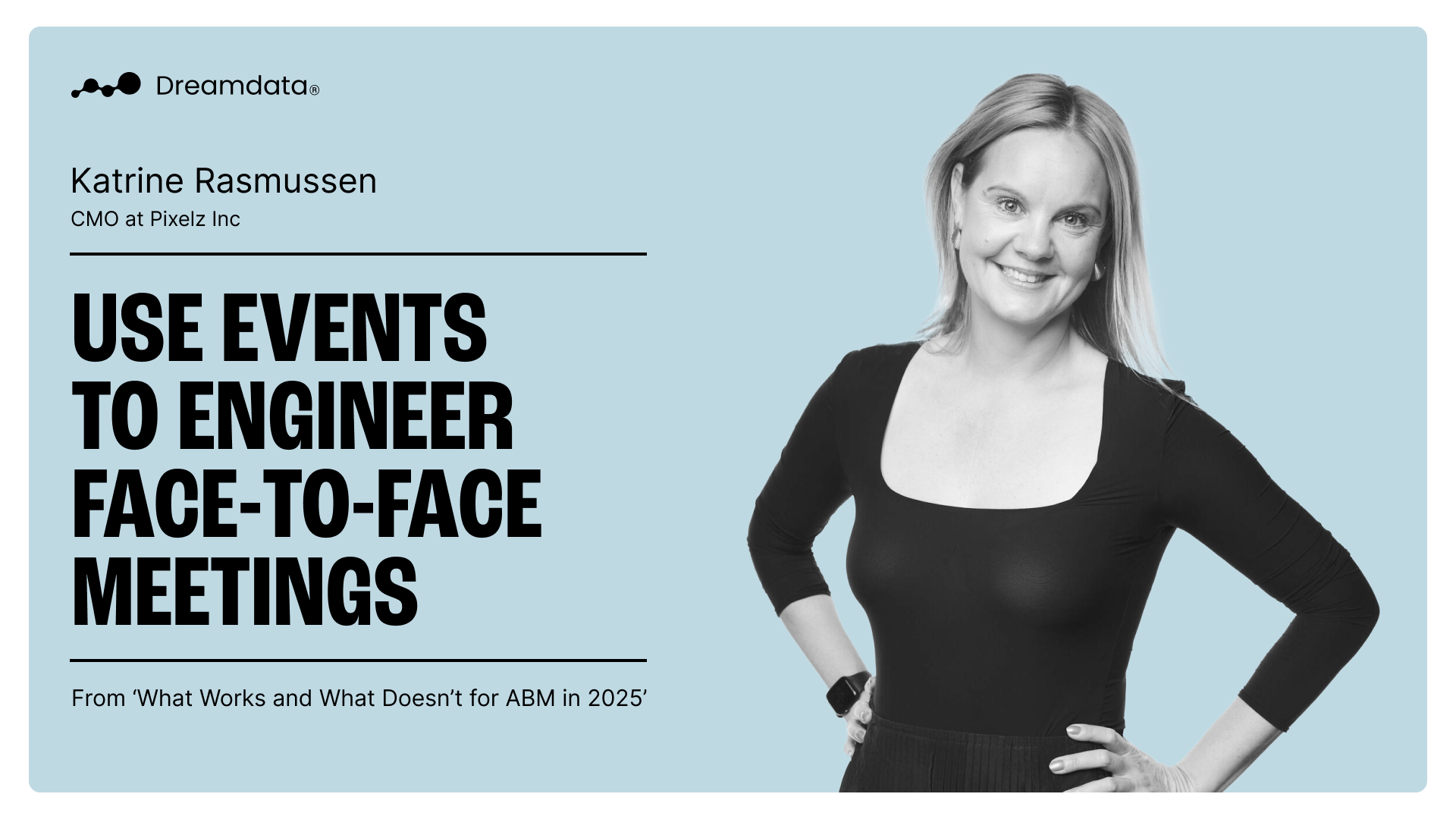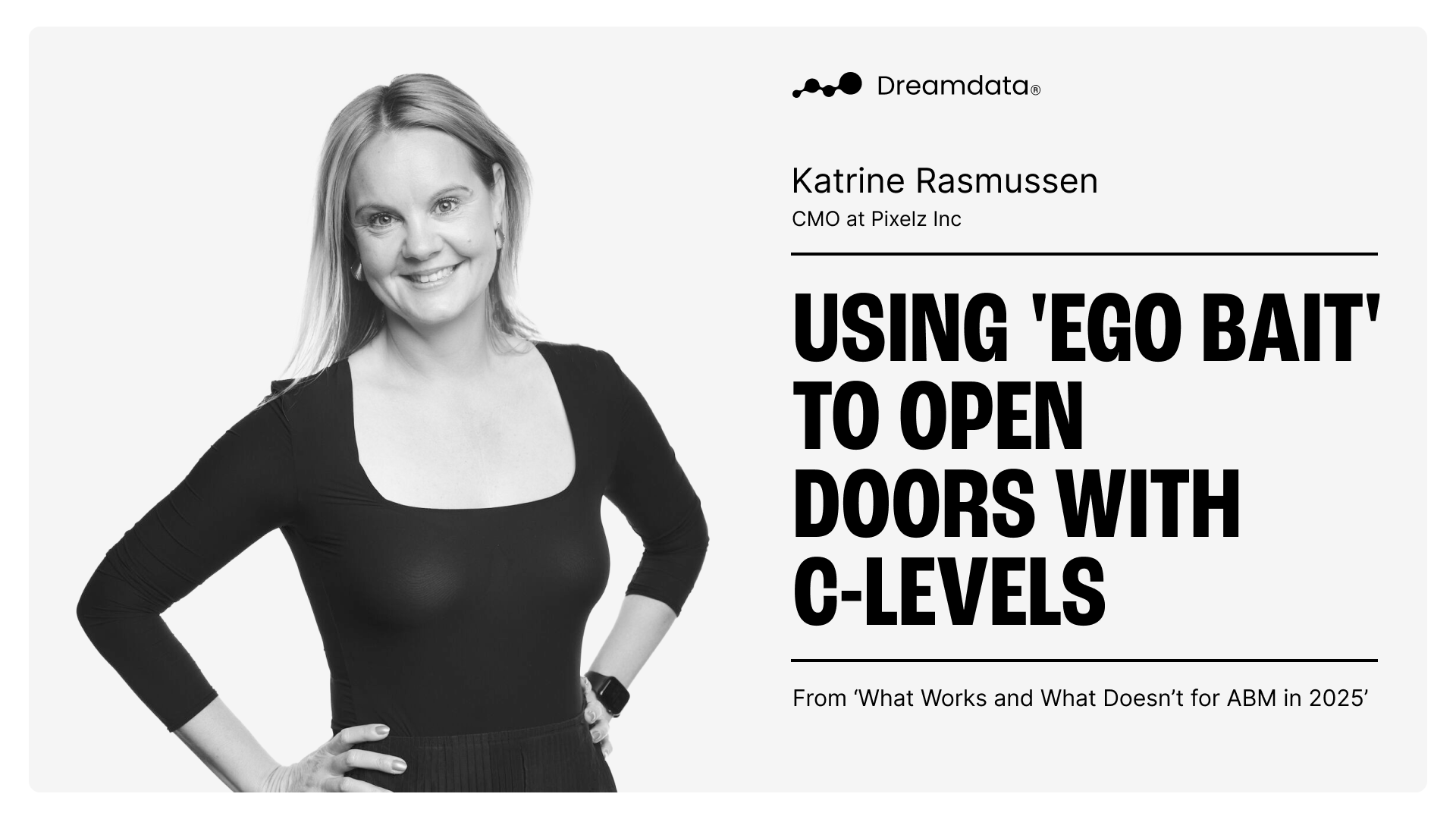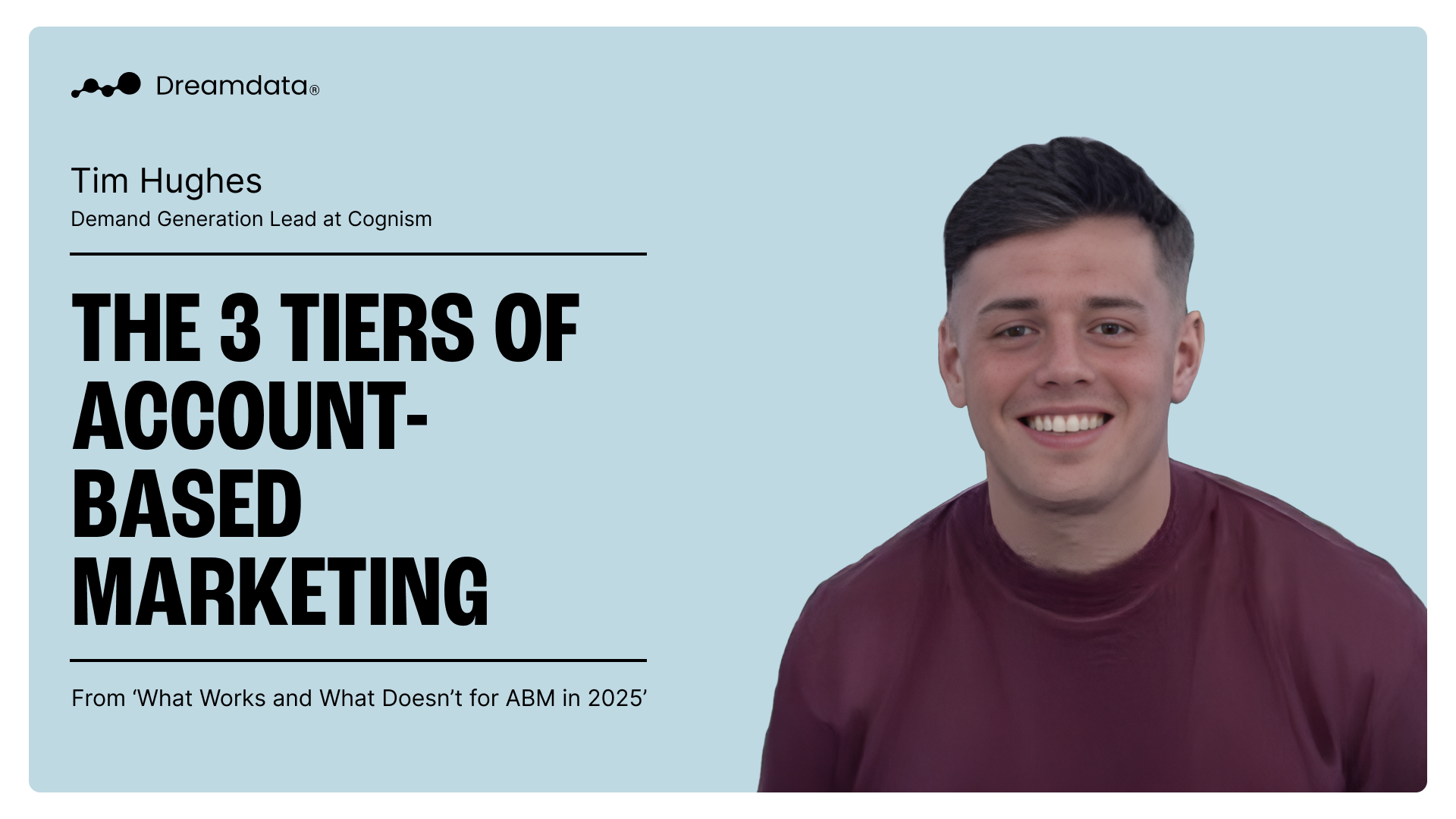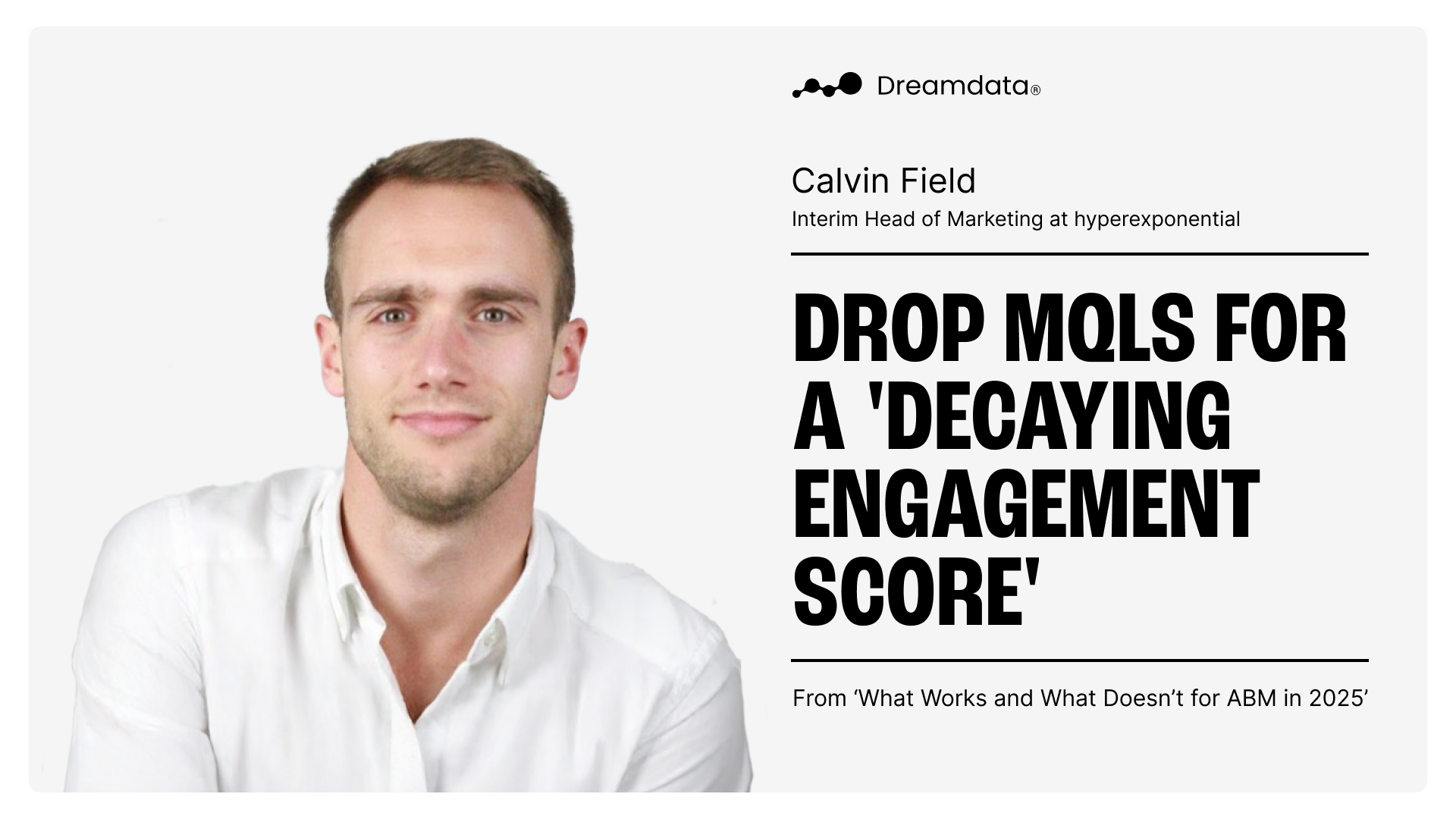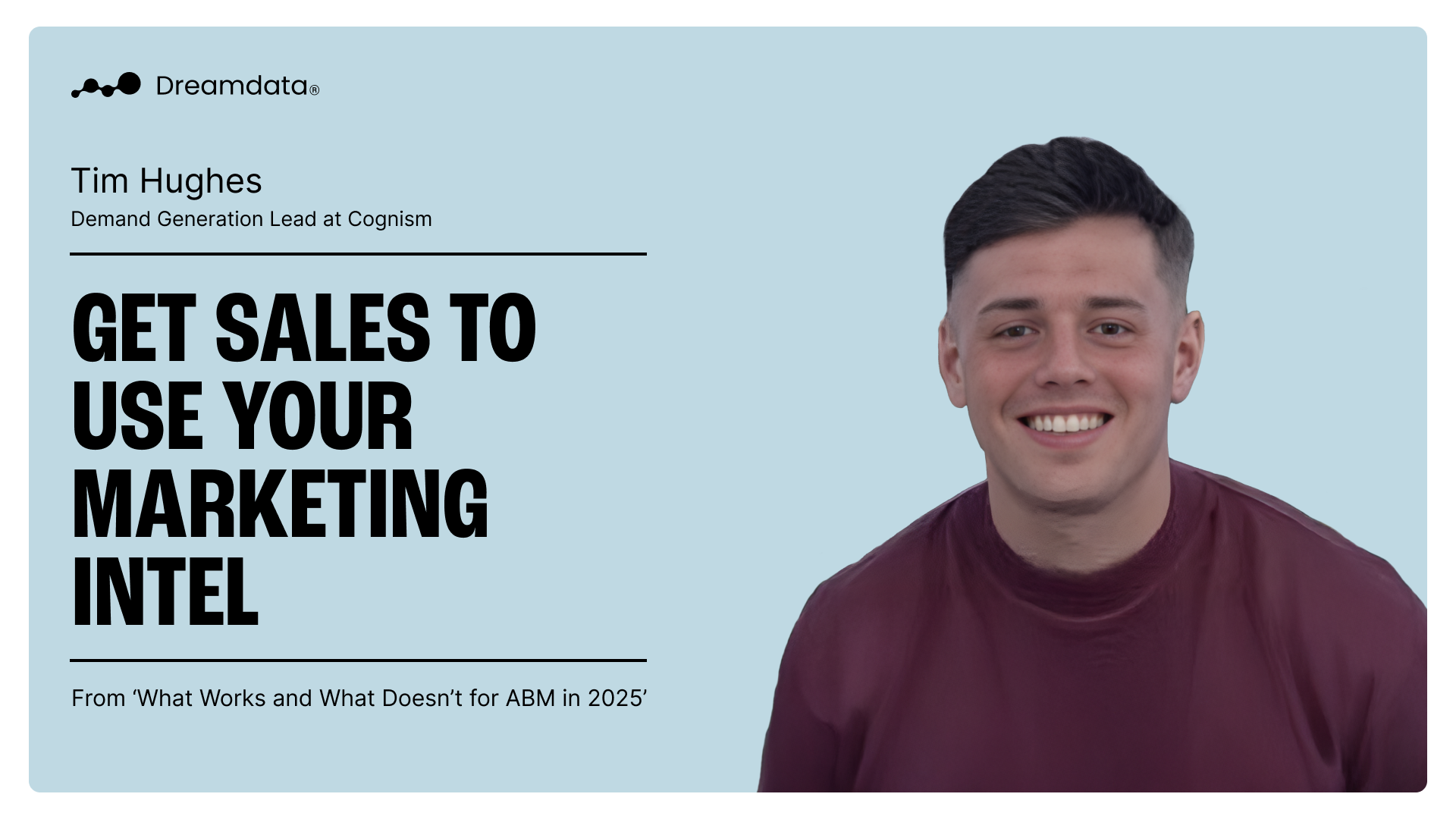What Works and What Doesn’t for ABM in 2025
As a B2B marketer, you may find yourself caught in a tug-of-war: leadership wants scalable, predictable revenue, but winning high value deals demands deep, unscalable personalization.
Account-based marketing lives at the center of this tension, yet many teams struggle to find a balance that doesn't burn out their resources or disappoint their C-suite.
So, how do you make it work?
On the Attributed Podcast, we sat down with a trio of leading B2B marketing minds to unpack just this, including: Katrine Rasmussen, Chief Marketing Officer at Pixelz Inc., Calvin Field, Interim Head of Marketing at hyperexponential, and Tim Hughes, Demand Generation Lead at Cognism.
Keep reading to learn their specific tactics on what it takes to succeed with ABM in 2025, or listen to the entire conversation here.
Defining ABM (It’s Just Good, Focused Marketing)
The term ABM has absolutely been stretched to the point of ambiguity.
However, the panelists agreed on a core definition: ABM is a strategic framework, not just a tactic. It's a foundational business strategy that aligns entire departments (from marketing and sales to customer success) around a shared goal of winning and growing a specific set of high value accounts.
For Katrine, whose team targets giants like H&M and Macy's, ABM is the centerpiece of everything they do, serving as the core structure into which all marketing and sales efforts are integrated.
Tim put it more bluntly: For me, ABM is just good marketing.
He emphasized that the bedrock of any successful ABM program is a laser focus on the best-fit ICP accounts, cautioning against the allure of "new flashy tools" that can distract from this fundamental principle.
Calvin, who operates with a very small target market of large insurers, highlighted the shift from broad market-based approaches to a more granular, account-centric view. For him, ABM is about understanding the priorities of a specific subset of accounts and having that as the center of everything that you do.
Quality Over Quantity for Account Lists
The panelists agreed that the meticulous process of selecting target accounts isn't a marketing-only exercise but a deep collaboration with sales.
At Pixelz, the process is deceptively simple.
We just look at our best customers.
Katrine explained the key is to understand why they are great customers, looking beyond surface-level data to the core reasons for a successful partnership.
Tim described a more data-driven, yet equally collaborative, approach at Cognism.
Account selection is a two-part process: part data analysis from marketing and part sales validation.
He also stressed the importance of "trigger events" to supplement ICP analysis. Identifying compelling events provides the perfect moment to engage.
For hyperexponential, with a known market of a few hundred accounts, the focus is less on who to target and more on how to structure the attack. They employ a "pod structure," where an Account Executive, an SDR, and an ABM manager work together as a cohesive unit, or hunting in packs. This structure ensures a deep, shared understanding of each account's needs and a unified message across all touchpoints, which is crucial for their high-touch model.
Executing the ABM Campaign
With the target list set, the panelists detailed their differing approaches to planning and execution.
A crucial part of Katrine's strategy is engineering face-to-face interactions. Recognizing that a direct sales pitch can fall flat, her team leverages a series of flagship and local events to create organic meeting opportunities.
Beyond events, her team also uses non-salesy approaches like podcast or speaker invitations to effectively open doors and build relationships.
This works because it offers value and a platform to the executive, rather than asking for their time. It's a disarming tactic that builds rapport in a way a direct sales outreach rarely can.
Tim Hughes laid out Cognism's tiered ABM approach, which functions as a complete growth framework with distinct goals for each level of engagement.
Each tier has a specific objective: one-to-many campaigns act as a broad brand play to establish trust, one-to-few campaigns use trigger events to capture active demand, and one-to-one efforts focus on expanding deals within open opportunities.
At hyperexponential, the planning is at the contact level within each account. They map out the buying committee and tailor their approach to each tier of influence.
Calvin emphasized that everything has to be very thought through, noting that a limited number of potential accounts limits the amount of room to test.
Measurement Beyond MQLs
The panelists were unanimous in their critique of traditional marketing metrics like MQLs as insufficient for gauging ABM success.
Calvin explained that for long and complex sales cycles, an MQL is merely a flag for a point in time. His team has moved to a more relevant "continually decaying engagement score" to measure marketing's true impact and ensure continuous effort is applied to keep accounts engaged.
This focus on the entire journey, rather than a single event, is a shared philosophy. Tim tracks leading indicators like account penetration and engagement scores to prove marketing's influence on deals sourced by outbound sales.
Similarly, Katrine knows that while revenue is the ultimate goal, the path there is paved with smaller victories that ensure her brand is the only one a customer thinks to call when the time is right.
The Missing Link is Sales & Marketing Alignment
A critical component highlighted by the panel was ensuring that the sales team not only buys into the ABM strategy but actively uses the intelligence marketing provides.
This alignment is what transforms a list of accounts and a marketing plan into actual revenue.
Tim Hughes detailed what he asks of his sales team to make the partnership work: accountability.
This means trusting the data, working the tiered account list without deviation, and most importantly digesting the information marketing provides.
To facilitate this, his team uses Dreamdata's customer journey maps to give SDRs clear visibility into which accounts are warm, which pages they're visiting, and how many touchpoints they've had. This gives sales the assurance they need to prioritize their outreach effectively.
Final Advice for 2025
The session concluded with each panelist offering their top piece of advice for B2B marketers:
You need to understand how your buyers buy... unless you really understand how your buyers buy, that is kind of useless. - Calvin Field
Get your positioning right. Understand why your customers are your best customers... if you don't have great positioning, then it's probably just going to be a big waste of time. - Katrine Rasmussen
Don't rely solely on intent to shortlist accounts... ICP is your foundation. Signals like intent, they're really great, but they come second. - Tim Hughes
The future of ABM is less about a revolutionary playbook and more about a return to the fundamentals of good marketing, supercharged by deep customer insight, strategic alignment, and a relentless focus on delivering value to a select group of ideal customers.
About the Speakers
Katrine Rasmussen is the Chief Marketing Officer at Pixelz Inc. With over a decade of international experience, Katrine specializes in building digital growth strategies and leading high-performing marketing teams in fast-paced startup environments.
Calvin Field is the Interim Head of Marketing at hyperexponential. Calvin has deep expertise in demand generation for niche, high-value enterprise markets, focusing on building marketing engines that work in step with sales to drive growth in complex buying environments.
Tim Hughes is the Demand Generation Lead at Cognism. Tim has been instrumental in building and scaling Cognism’s successful ABM program to support the company’s move upmarket. He is a hands-on practitioner who specializes in using signal-driven targeting and creative, multi-channel plays.






